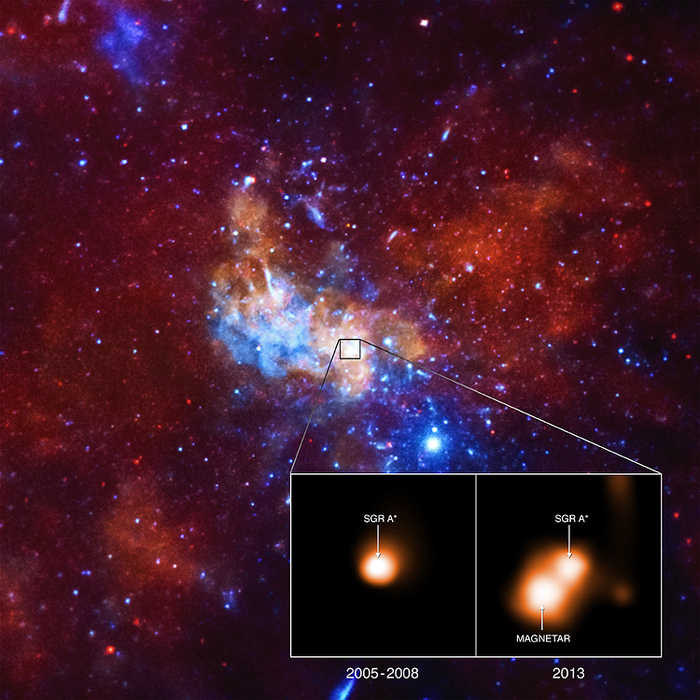
 Credit: NASA/CXC/INAF/F.Coti Zelati et al.
Credit: NASA/CXC/INAF/F.Coti Zelati et al.
Surprising Magnetar
Neutron stars are the extremely dense, collapsed cores of dead massive stars, left behind after a supernova explosion blows the star apart. Neutron stars may have strong magnetic fields and rapid spins. Some neutron stars, called magnetars, have exceptionally strong magnetic fields - the strongest known magnetic fields in the Universe. One interesting magnetar lies close to Sgr A*, the supermassive black hole at the center of the Milky Way. This magnetar, known as SGR 1745-2900, was first detected in 2013 after a large X-ray outburst. The image above shows the Galactic center in X-rays as observed by the Chandra X-ray Observatory, while the inset shows a Chandra close-up of the region around Sgr A*, showing how this magnetar brighted in 2013. Followup observations with Chandra and XMM-Newton have shown a surprisingly slow decline of this X-ray outburst. This slow decline suggests to astronomers that some phenomenon, perhaps associated with exceedingly strong magnetic loops on the neutron star's surface, is helping to heat up the surface of the neutron star, enhancing its X-ray glow.
Published: June 1, 2015
<
HEA Dictionary ● Archive
● Search HEAPOW
● Other Languages
● HEAPOW on Facebook
● Download all Images
● Education ● HEAD
>

Each week the HEASARC
brings you new, exciting and beautiful images from X-ray and Gamma ray
astronomy. Check back each week and be sure to check out the HEAPOW archive!
Page Author: Dr. Michael F. Corcoran
Last modified Monday, 26-Feb-2024 17:23:45 EST


